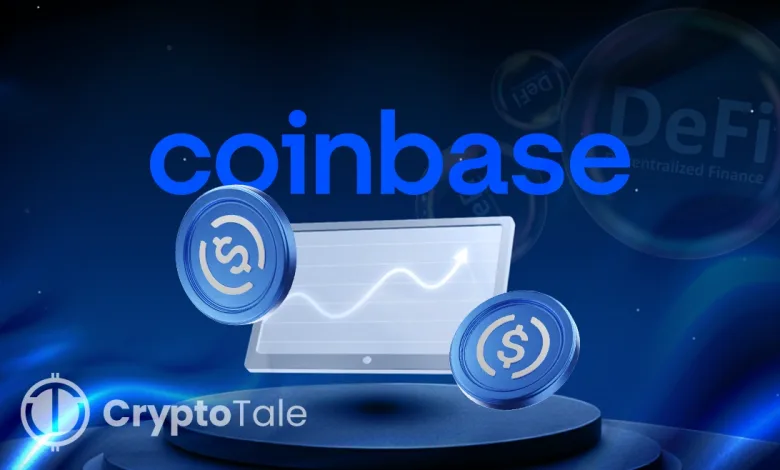Coinbase Relaunches Stablecoin Bootstrap Fund to Boost DeFi Liquidity

- Coinbase relaunches funds to channel USDC into major DeFi platforms.
- The move seeks to boost USDC liquidity, test stablecoin dominance, and expand DeFi reach.
- Initial targets include Aave, Morpho, Kamino, and Jupiter for on-chain capital growth.
Coinbase has relaunched its second Stablecoin Bootstrap Fund, which was first launched in 2019, to inject USDC liquidity into leading and emerging decentralized finance platforms. The move targets Ethereum-based lenders Aave and Morpho, along with Solana-based trading hubs Kamino and Jupiter. This deployment aims to energize capital flows across DeFi, strengthen protocol ecosystems, and challenge stablecoin market dynamics.
According to the firm, the program will be extended to additional protocols and stablecoins in the future. It is actively seeking collaborations with pre-launch projects and teams aiming to grow stablecoins from the outset. Coinbase Asset Management (CBAM) would oversee these allocations to ensure reliable rates for users in both established and nascent DeFi environments.
A Move To Elevate USDC
The development of USDC by Coinbase and the Circle Internet Group keeps the coin at the center of the exchange’s long-term plan. It also has a market capitalization of over $100 billion, smaller than Tether USDT. Improving the usability of USDC in DeFi may help to appeal to additional traders, borrowers, and liquidity providers, challenging the control that Tether holds over the stablecoin space.
The Total Value Locked (TVL) of the DeFi protocols stands at $165.4 billion, as noted by DeFi Llama. Aave is at the top with a value of $41 billion, just slightly ahead of the Ethereum liquid staking platform Lido, which has $40.8 billion. With the intention of placing the first tokens on Aave and Morpho, Coinbase could target high-liquidity environments that will increase the circulation of USDC.
The Stablecoin Bootstrap Fund was initially introduced in September 2019, allowing Ethereum-based DeFi protocols, including Uniswap, Compound, and dYdX. Initial deployments were of 1 million USDC to Compound and dYdX each. Such an effort accepted USDC in the early phases of its development, making it one of the largest DeFi assets only nine months after its launch.
Today, USDC’s market cap stands at $66.46 billion, far behind USDT’s $164.99 billion, according to CoinGecko. The token operates across multiple blockchains, including Ethereum, Base, Solana, Polygon, Aptos, Avalanche, and Sui. This cross-chain reach positions USDC to integrate with a wide variety of DeFi protocols.
Source: CoinGecko
The relaunch follows Coinbase’s second-quarter earnings report. The company posted $1.5 billion in revenue, missing analyst expectations of up to $1.59 billion. While overall revenue fell 26% from the previous quarter, stablecoin-related earnings tied to USDC increased by 12%, which translates to $332 million.
Coinbase Expansion Into DeFi
Coinbase is also growing its DeFi footprint. Last week, it announced intentions to add a decentralized exchange to its portal. The upgrade will provide traders with millions of tokens not available before on its centralized market, which is an indication of further decentralized trading infrastructure.
Related: Coinbase Introduces DEX Integration with Self-Custody Wallet
The exchange is expanding the range of products into more than traditional crypto trading. It has indicated the intention of ultimately becoming an everything exchange, including tokenized stocks, prediction markets, and pre-IPO token offerings.
Coinbase is also repositioning its wallet product. On July 16, the Coinbase Wallet was rebranded to “Base app.” The company described it as a step toward building a “super app” that combines social features, applications, chat, payments, and trading in a single platform.
Base app’s head of product, John Granata, said the platform seeks to boost on-chain freedom, spark creativity, and drive crypto innovation. He noted the app could serve as a foundation for a new type of social network built on blockchain tools. The application is currently in beta testing.
By restarting its stablecoin fund, Coinbase is targeting deeper integration with the DeFi sector while reinforcing USDC’s position. This effort will test the token’s resilience against USDT and measure the adaptability of DeFi ecosystems as competition from tokenized assets intensifies.




